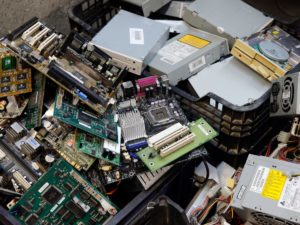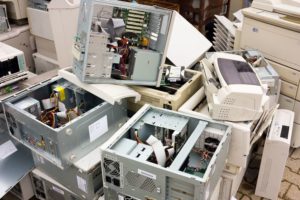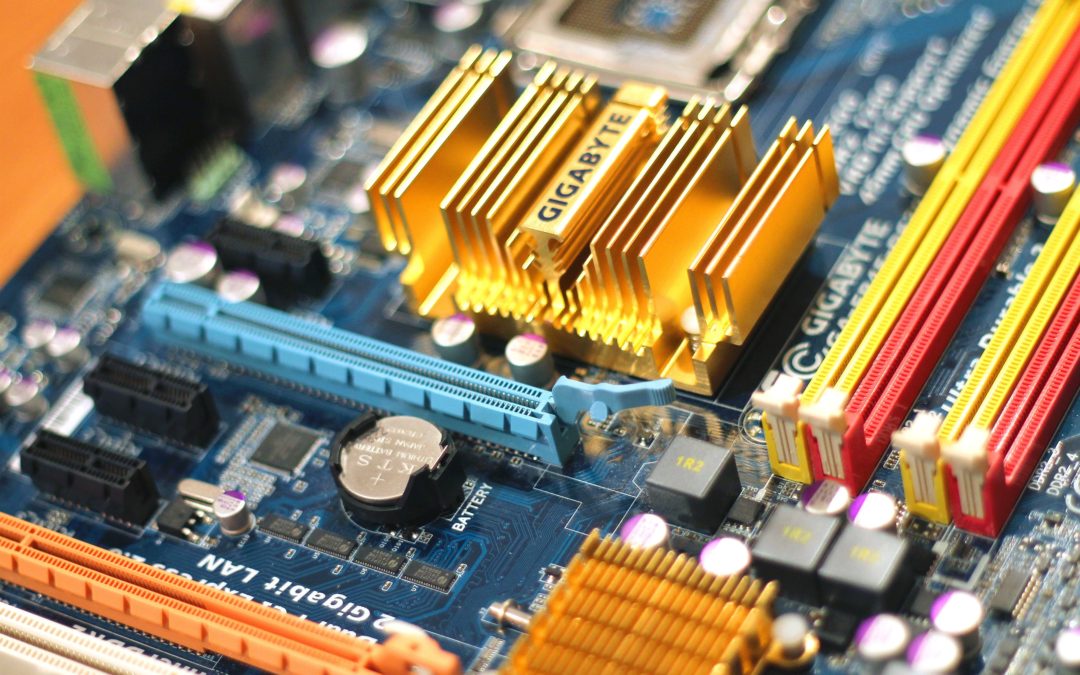 According to the U.N., every year the global population generates between 20 million and 50 million tons of electronic waste. While this represents only 5% of the total garbage load generated across the planet, the damage it’s responsible for is far greater than other types of trash.
According to the U.N., every year the global population generates between 20 million and 50 million tons of electronic waste. While this represents only 5% of the total garbage load generated across the planet, the damage it’s responsible for is far greater than other types of trash.
This article will explore how devastating e-waste can be on ecosystems and on the human body and will make a strong case for why responsibly e-cycling electronics is the best way to prevent a portion of this never ending waste stream from further damaging the planet.
E-Waste Contains Dozens of Toxic Compounds
Electronics contain a laundry list of dangerous, carcinogenic, and bioaccumulative elements. You’ll find heavy metals such as arsenic, lead, mercury, copper, cadmium, barium, beryllium, nickel, chromium, zinc, and gold. Additionally, e-waste contains PVC, PCBs, polybrominated flame retardants, and more.
These are all extremely hazardous to human health and delicate ecosystems, and when e-waste isn’t recycled, these toxic components can leech out of the waste and into the environment.
Landfilling E-Waste Only Hides the Problem
 E-waste that isn’t recycled is commonly dumped in landfills where it slowly breaks down, leaching dangerous compounds into groundwater. This carries pollutants far from their source, where they can mingle with municipal water supplies and become embedded in the soil.
E-waste that isn’t recycled is commonly dumped in landfills where it slowly breaks down, leaching dangerous compounds into groundwater. This carries pollutants far from their source, where they can mingle with municipal water supplies and become embedded in the soil.
When these toxins are taken up by plants they enter the food supply, which creates serious health hazards for the global population. These are compounds that build up over time, so the longer e-waste sits in landfills, the more it breaks down, the more toxic components it releases, and the greater the problem becomes.
We can’t do anything about the e-waste already sitting in landfills, but we can avoid making the problem worse by diverting as much e-waste as possible away from landfills and into e-cycling programs.
Burning E-Waste Pollutes the Air We Breathe
 Electronics that aren’t land filled often end up in incinerators, arguable a worse situation for the planet. E-waste contains plastics as well as the compounds mentioned earlier. When burned plastics release hazardous dioxins into the air. Many other dangerous components can become airborne when incinerated as well, contributing to toxic air pollution and creating hazardous rains.
Electronics that aren’t land filled often end up in incinerators, arguable a worse situation for the planet. E-waste contains plastics as well as the compounds mentioned earlier. When burned plastics release hazardous dioxins into the air. Many other dangerous components can become airborne when incinerated as well, contributing to toxic air pollution and creating hazardous rains.
Both polluted rain and tainted groundwater eventually make their way into lakes, streams, and eventually the ocean. Fatty tissues in fish bioaccumulate these toxic elements creating another channel for e-waste chemicals to enter the global food supply, and ultimately our bodies.
Burning e-waste also releases CO2 and other hydrocarbons that contribute to global climate change. There’s no good reason to incinerate or melt down discarded electronics. E-cycling this waste keeps its toxic components out of the environment and out of our bodies.
Jay Hoehl Inc. Makes E-Cycling Easy
Arizona businesses that want to responsibly dispose of their unwanted or obsolete electronics need only call Jay Hoehl Inc. We come to you! We’ll make sure that your waste stays out of landfills and incinerators and is recycled properly for reuse by industry.
The more e-waste we can recycle and reuse, the better off we’ll all be. Give us a call for more information.


